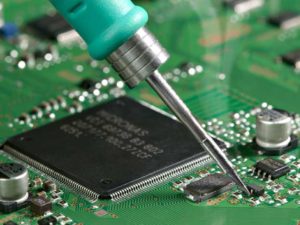When Disassembly PCB Board Reverse Engineering Target, notes should be recorded for possible assembly procedures to be included in the Technical data package. As they are disassembled, a list of all piece-parts/components should be created, including quantities and special part markings which may indicate that the part is either commercially available or a military specifications part, some of the mechanical parts might be not able to find the proper part number of marks from appearance which will require to provide the manufacturer for further analysis and evaluation, other components such as the inductor, oscillator, resistor and capacitor which normally doesn’t have dedicated or specified brands needs to measure their value and tolerance.

Disassembly PCB Board Reverse Engineering Target
A layout of the parts, marked with the assembly sequence, may be useful for creating the assembly drawing and for reassembly of the item.
During PCB Board Reverse Engineering Target disassembly, each piece-part/component (bagged and tagged) should be identified to facilitate control of parts. Each piece-part/component should be examined to determine any markings which could identify the actual manufacturer, i.e., trademark, FSCM (federal supply code for manufacturers) number, manufacturer’s name, part number, patent mark, mold mark, etc. Where lubricant is applied, look for markings on the grease fittings which may indicate the lube oil requirements. Samples of the grease or lubricant should be taken for future identification prior cleaning the disassembled parts.
When disassembling electrical assemblies, all terminal markings should be reviewed. If the terminal and pin location or FROM-TO data is not stamped on the wires, each end should be clearly marked and a wire-run list should be created. The photographs with all plug and terminal designations should also be clearly marked.
Items that are not bonded, welded, or otherwise permanently joined should be treated as an inseparable assembly. Destructive disassembly may not be required. If possible, all non-destructive testing of hardware should be performed prior to destructive testing.






